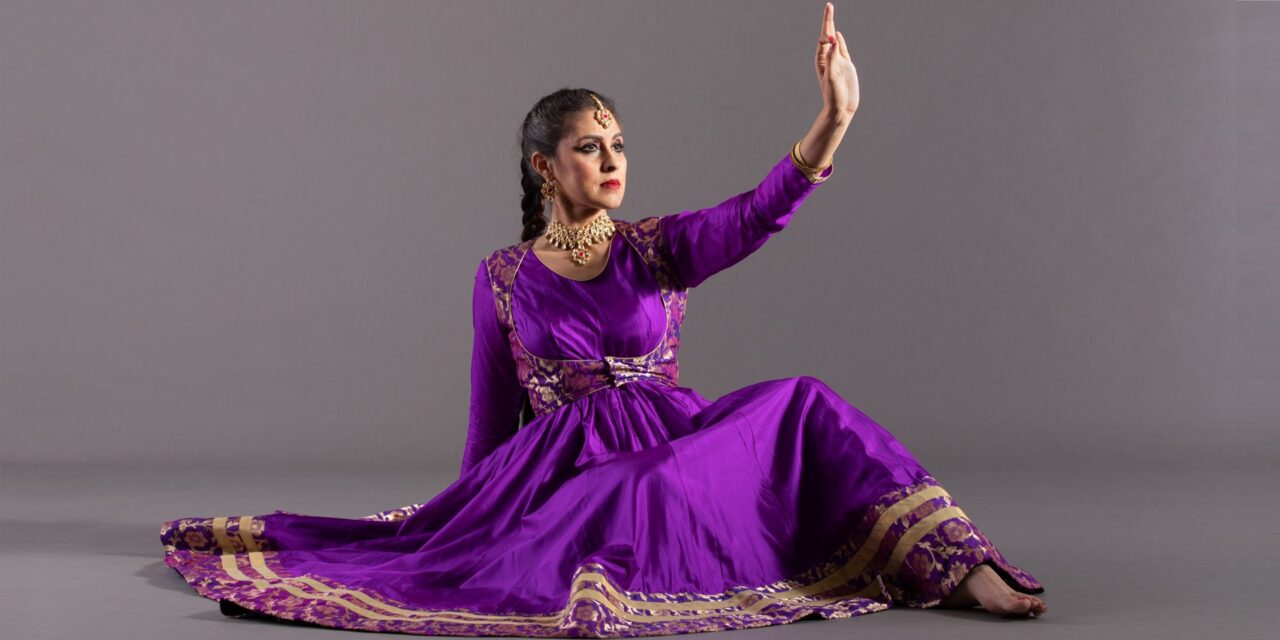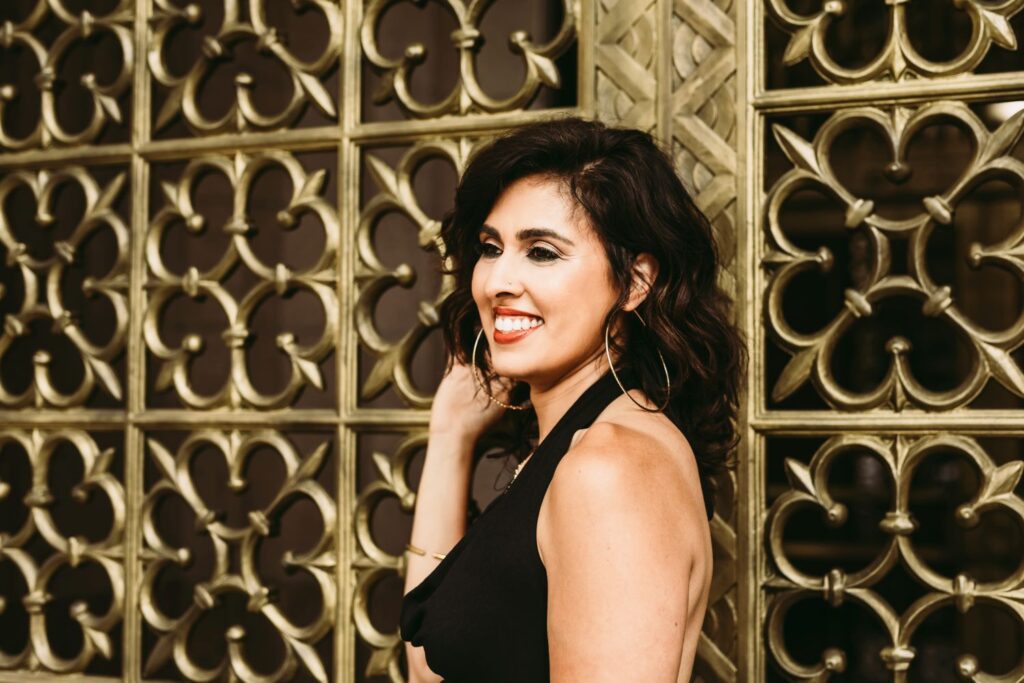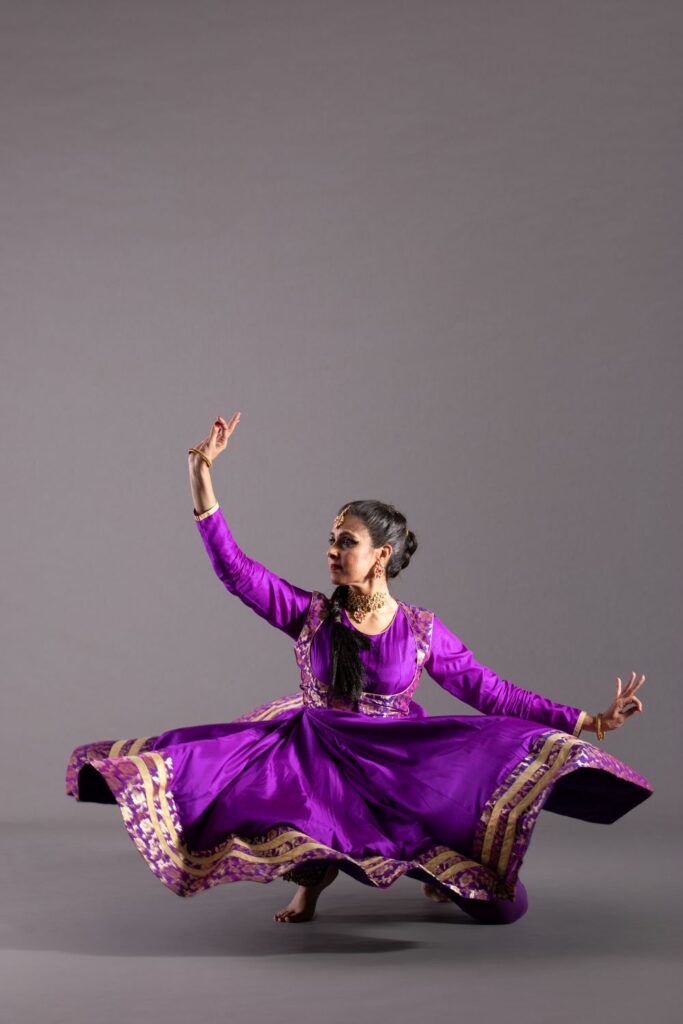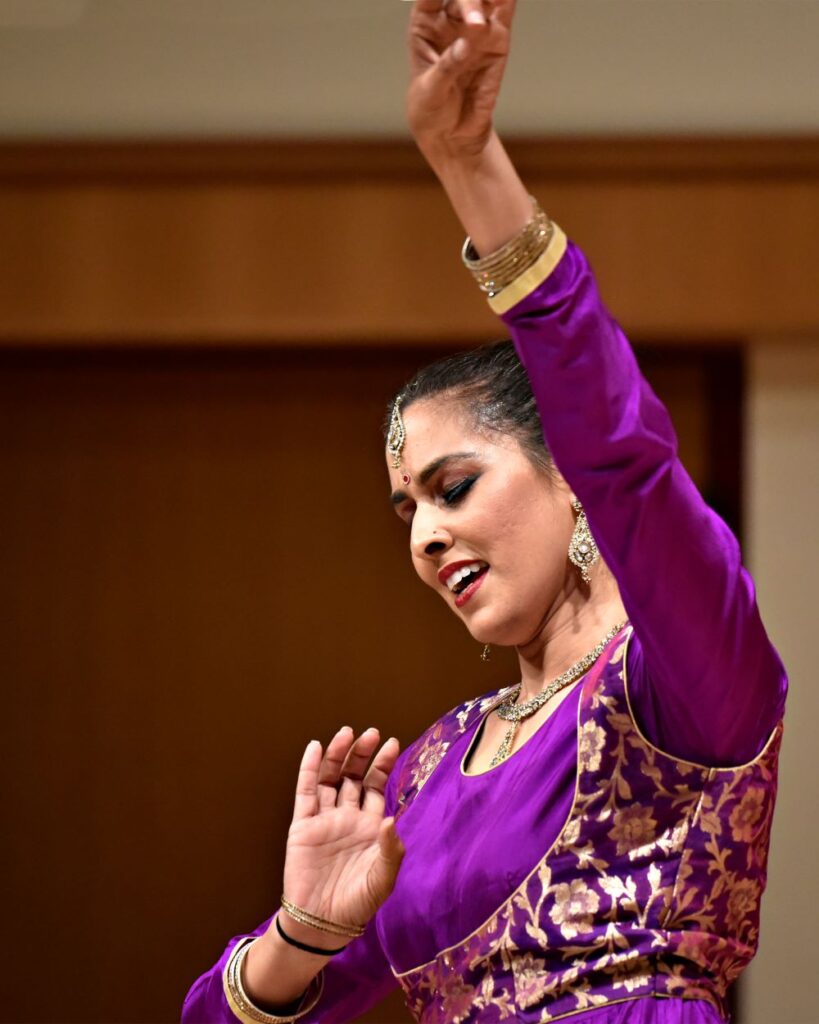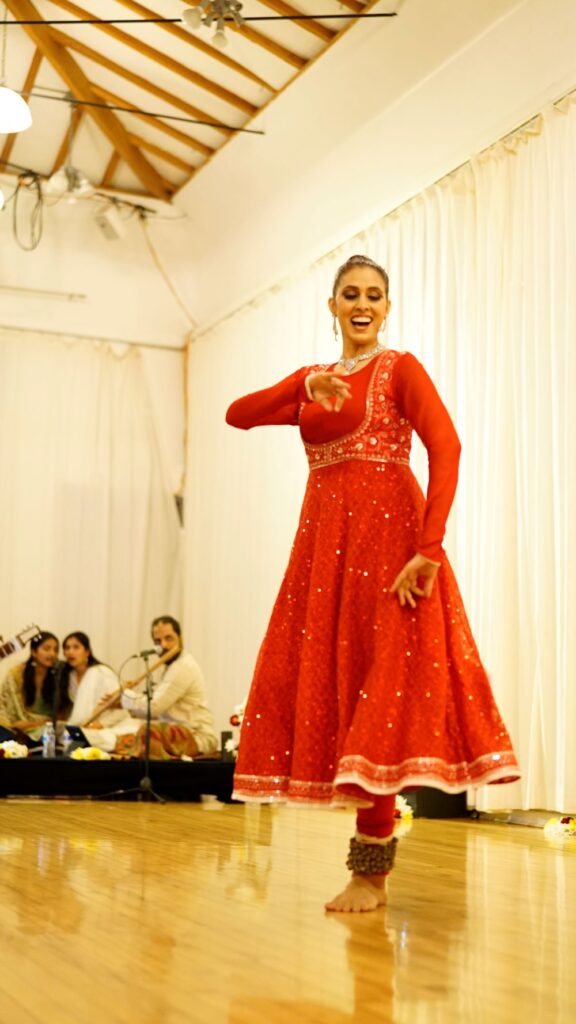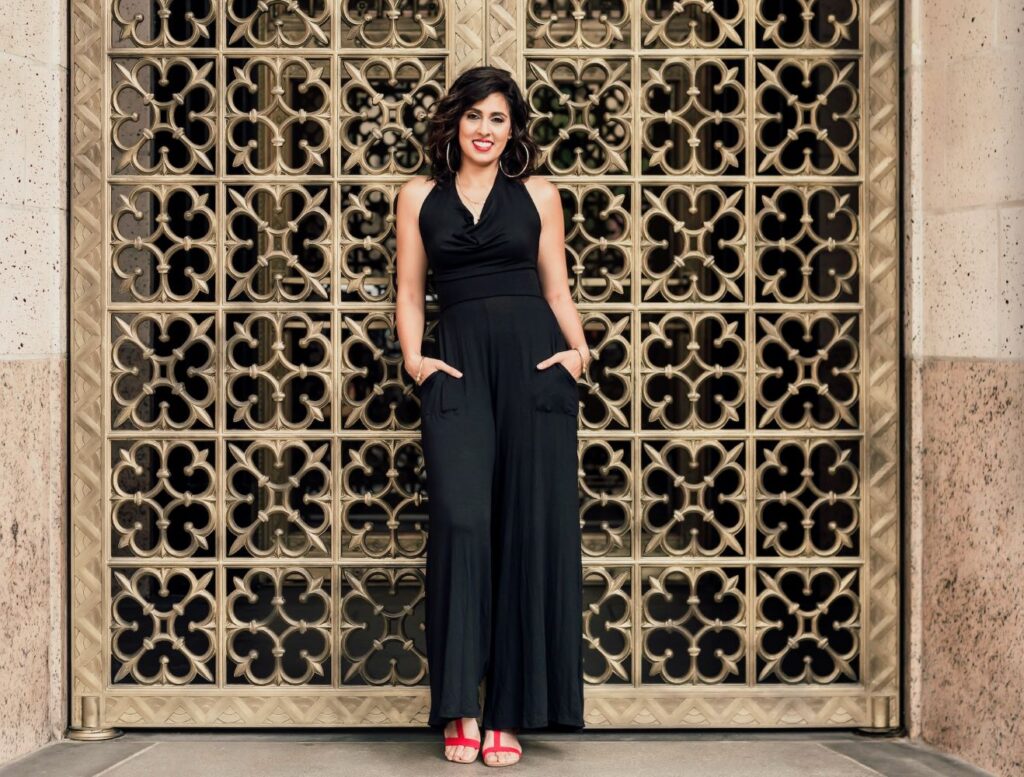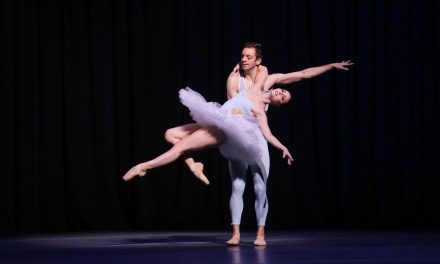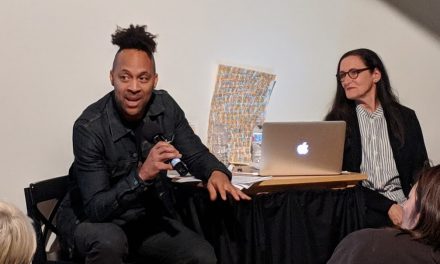Rather than being led by only one artistic director, internationally touring Leela Dance Collective presents a wide-range of choreographic voices directed its three Co-founders Rukhmani Mehta, Seibi Lee, and Rachna Nivas. The company is based in Los Angeles with training centers in San Francisco, New York, and Denver. At 7:30 pm on November 13, 2025, Co-Artistic Director of Leela Dance Collective Rukhmani Mehta will perform Sandhi at the Wende Museum in Culver City. The performance is Free but a RSVP is required.
Sandhi is a traditional kathak solo performed by Rukhmani Mehta in collaboration with renown Sitarist, musician and composer Jayanta Banerjee and tabla virtuoso Salar Nader. These are two musicians with whom Mehta has worked for over 20 years and they are sought-after, expert kathak accompanists, a distinct artistic skill.
Leela Dance Collective has performed at Ford Theaters, BroadStage, Kimmel Cultural Campus, the Green Music Center, Yerba Buena Center for the Arts, National Centre for the Performing Arts, Mumbai, Maui Arts & Cultural Center, NC State LIVE, and at many other venues.
LA Dance Chronicle dance writer Jeff Slayton met with Mehta on Zoom to learn more about the company and her new work Sandhi.
LADC: Because many of our readers might not be familiar with the kathak dance form, would you mind providing an overview? What many of us know is that is a very ancient dance art form and that there is extensive and intricate footwork and facial expressions.
Mehta: Kathak is a solo art form, like all other North Indian classical music and dance forms. So traditionally, the dancer performs as a soloist on the stage for one to two hours usually with a trio or quartet of accompanying musicians. It’s not choreographed. Although there’s a structure and a movement vocabulary, it’s an improvisatory art form by nature. It’s a conversation between artist, audience, and musician.
She began her dance training at a very young age.
Mehta: As a young person, I initially trained in Bharatanatyam, which is South Indian classical dance, and when I was a student at UC Berkeley. I was in search of a Bharatanatyam teacher. I wanted to continue my studies but I didn’t find a teacher that fit. I happened to be invited into this kathak class taught by my teacher or guru, Pandit Chitresh Das, and I was completely mesmerized by the art form. It’s interesting because a very specific aspect of Kathak made its way into Bollywood films, which is where I first experienced it. When I met my guru, I recognized the real vigor, demand, musicality, and depth of the artform.
While in the Bay Area, Mehta studied with Das four days a week for 15 years in the very traditional Indian manner with the gurusha (guru) disciple in a one-on-one relationship. She also performed in his company and taught at his school. Sadly, in 2015, Das unexpectedly passed away at the age of 70, after which Mehta and several of Das’s senior disciples got together to form the Leela Dance Collective to carry the tradition and lineage of kathak dance forward. They did so with the understanding that it would be a collective endeavor, not a company run by only one artist. This collective would collaborate with artists from not only their genre but from others as well, including contemporary chamber music and tap dance.
One of the most famous examples of this was the creation of SPEAK (2017)which combines Indian kathak dance and American tap dance The work was conceived of and created by Rukhmani Mehta (previously Rina Mehta) and features Mehta, Nivas, Michelle Dorrance, and Dormeshia, joined by some the world’s leading Indian classical and jazz musicians. SPEAK will have its NY premiere on February 21, 2026 presented by the 92nd Street Y, New York, as part of the What Flows Between Us Festival and the Women Move the World Harkness Mainstage Series, focusing on female choreographers.
Mehta: I would say that the heart of the collective is the artistic dialogue and exchange, which leads to the creation of really phenomenal artistic works. So we’ve been performing with the Leela Dance Collective for 10 years. A big part of the collective is creating collaborations and traditional shows that are for the main stage, but the other major part is really creating a space for the traditional Kathak solo to ensure that the original form and intent of Kathak is also advanced and preserved.
LADC: When did you get the urge to choreograph?
Mehta: That’s a great question because group choreography is not an original a part of the kathak form, right? In its original form, it’s a solo form. So, in my training with my guru (Das) for almost, I would say 13 out of the 15 years that I danced in his company – all traditional works. And then we were required to perform the traditional solo after 10 years, while we were studying the tradition really, really deeply.
Mehta performed with the Chitresh Das Dance Company (under the name Rina Mehta) for almost 15 years. Das was choreographing both company works, as well as collaborations in which kathak was in dialogue with tap, Indonesian dance, and, Flamenco, so the members of his company were being exposed to those artforms as well.
Mehta: My Leela Co-Artistic Directors and I were company members and teachers at the Chhandam School of Kathak. Learning how to choreograph was a part of our training. As we advanced both as educators and company members, [Das] would regularly have us choreograph; either segments for artistic works that he was directing or student performances and pieces for the school. So my experience and interest in choreography started there.
In terms of our training, it was exclusively focused on the kathak tradition. We were discouraged from fusing the form with other movement styles or diluting/commercializing it to make it more accessible. We learned that collaboration, relationship, and dialogue with artist experts in other forms does not require fusion or a merging/diluting of technique. We carry this approach in our Leela Dance Collective artistic vision — collaborations are about multiple art forms in dialogue with each other. Each art form maintains its integrity and speaks to one another.
Das had lifted kathak up into visibility, putting it on the artistic map and because Das’s death left such a vacuum on the stage, Mehta felt that she should begin choreographing out of responsibility to keep the art form alive. Although most of the Indian art forms are flourishing today, Mehta feels like they are only doing so in certain communities in niche and community spaces, not on the main stages. She felt compelled for Leela to develop, create and choreograph productions for the main stage that would speak to today’s audiences. Das’s traditional repertoire is also embedded in the solos and productions that the Leela Dance Company presents.
LADC: What was the inspiration for Sandhi?
Mehta: Sandhi is a traditional solo. Our large productions are amazing but the traditional solo is its own version of incredible. It’s all kathak. It’s like a full meal.
When we do larger productions, we pick and choose parts of the form that would work for that particular show. But with the traditional solo, you have it all – you have the story. You have what is called the thaat which highlights how the Mogul courts influenced the form. You have Hindu mythology, and then you also have taranas – fast paced dance compositions. It is really where you highlight the conversation between the musicians and the dance, and the improvisational aspect of it.
She explained that there a real sense of risk and joy in performing the traditional solo and personally feels strongly that there needs to be practitioners, performers and students of the traditional solo. In the US there is a movement in the art form toward group choreography and synchronized dance as kathak artists try to find ways to present the artform to diverse audiences in a manner that it is accessible. Mehta knows that this is necessary but believes that it is most important not to lose what is essential to the original form.
Mehta: Part of what gets lost in larger group works is the improvisation aspect and then you end up distilling the form down to only performing those things that are palatable to diverse audiences.
This is why Mehta feels so passionate about performing the kathak solos. She strives to keep the art form alive not only for audiences but so young students of kathak can see and learn from them.
Mehta: I chose the title of this solo intentionally. In Sanskrit, the literal definition of the word Sandhi is “to join” or “come together.” In philosophical terms it refers to a meeting point — the liminal space where two entities, moments, or states of being merge and transform. It is the threshold between opposites—day and night, inhale and exhale, silence and sound, self and other – thresholds that can be portals to transformation and transcendence
She explained that while kathak is dance and entertainment, if dancers want to seek it, there is a spiritual underpinning to the art form. Mehta did choose to go there. Her teacher, Das taught, like all classical Indian music and dance forms, that kathak is a pathway to consciousness. These are knowledge traditions and she wanted to highlight that the art form itself can be a portal connection to a larger consciousness of oneself, the divine or the universe.
In her press release, Mehta wrote “Sandhi is my effort to keep the art of kathak alive in its essential form and nature.” I ask her if the art form was indeed in danger. She answered yes.
Mehta: In one way Indian culture is thriving. One of the greatest things about Indian culture is that it is unbroken, [goes] back into prehistory. It’s deep. It’s rich. But, Indian classical music and dance lack wide spread institutional support, and the real risk is delusion, distortion, and commercialization. Those are the forces that I feel are a great risk to the form. There aren’t many spaces and places where the knowledge, the deeper parts of the tradition can be passed on and flourish. So, I say absolutely that the art form is at risk.
Mehta wants to audience to know that Sandhi is a deep dive into the form and an excellent way for them to get really intimate with the kathak form. Hopefully, like all classical Indian music and dance, this performance should provide a transcendent experience to both artists and audiences.
Performance Details
Sandhi performed by Rukhmani Mehta with Jayanta Banerjee and Salar Nader
Thursday, November 13, 7:30-9pm
The Wende Museum
10808 Culver Boulevard Culver City, CA 90230
Performance is Free, RSVP required
RSVP: https://www.eventbrite.com/e/sandhi-tickets-1579292489349
This performance is made possible in part by the City of Culver City and its Cultural Affairs Commission, with support from Sony Pictures Entertainment.
For more information about the Leela Dance Collective, please visit their website.
Written by Jeff Slayton for LA Dance Chronicle.
Featured image: Rukhmani Mehta – Photo by Margo Moritz.

